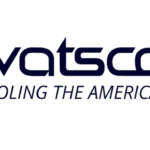Last year was a real challenge for distributors. Nonetheless, there were notable successes, and 2021 looks very promising for several of us. In both years, successful results have been the product of many activities: acquisitions, customers, product decisions, suppliers, partners, customer focus, investment, and many, many other factors (including dumb luck).
Looking both back and forward, it’s apparent that getting to the top rarely depended on access to unlimited resources, development of one unique product, or having unlimited resources to attack every environment, every option, every product, every competitor, and every market segment. The simple reality is that every company must achieve its targets with less than unlimited and perfect resources, and therefore every organization must focus on volatile objectives that are open to customer quirks, market insights, sales and design creativity, availability of resources, pure human efforts and applied capabilities (and many limitations).
Nonetheless, there is one common critical success attitude that is a shared breakthrough secret for distributors. That secret is to orchestrate purchasing, sales, pricing, operations, customer interfaces, staff recruiting, messaging, and financial controls and resources. The most important success verb is the word “orchestrate.” It is also the most challenging and most difficult to achieve, create, coordinate, empower, maintain and internalize.
For a winning distributorship, all customers, all SKUs, and all resources and environments are never created equal. As a matter of fact, the results of the best customers, the best SKUs and the best programs generally differ dramatically, with many going through varying stages that demand considerable attention and investment while contributing far less than the targeted timing and bottom-line profit — before their objectives are achieved.
Orchestration comes into focus in the critical building process. The winners carefully learn when to make costly sacrifices and when to step away, went to take a risk and when to avoid it, when to support the exception and when to skip it. As a result, the most successful customers and SKUs don’t just happen; they are the product of orchestrated investment of commitment, time, planning, effort, money, process, product and energy.
Effective orchestration
It all boils down to involving your organization’s cross-section of skills, while balancing risks, and testing and acknowledging all responses. From my point of view, the best orchestrators share the following capabilities:
- Focus on emerging distribution trends, but recognize that not every customer, employee, investor, resource, or manager is up-to-date and totally supportive of the current trends.
- Effectively develop, acquire, and execute the processes that you (and more importantly, your suppliers and customers) really value and desire.
- Refocus on cost control and customer satisfaction.
- Introduce new sales, supply chain and technical resources, and recognize that understanding the process often takes discussion and testing time before it can be understood and internalized.
- Bring together often-minded teams with varying experience, attitudes, skills and egos.
- Know when to move to responsive and cutting edge strategies and when to put them on the back burner (check with capability No. 5).
- Find the resources and benefit from them in order to enhance your capabilities. Recognize that many of these capabilities are likely to reside within the knowledge and experience of your employees, technologists, suppliers and respected resources, whereas others may come from promotions, webinars, articles, customers, competitors and business professionals.
- Regardless of your opportunities, recognize that costs and operations control often are not within the abilities of the individuals responsible for day-to-day management. For that reason, achieving coordination is often a great challenge to be overcome. For example, if you want to lower inventory costs, you may need a plan for premium transport and for training salespeople to convince customers to switch from low-volume SKUs to higher volume SKUs, and that in turn may need input from pricing in order to push the needed SKUs over the volume target that will be necessary.
- Coordinate orchestration!
- Have fun and succeed!
From my point of view, tempered by several years of experience, the biggest challenge and the best opportunity both emerge from dealing with the process of orchestrating. As I have heard many times, “It sure ain’t easy,” and that is absolutely correct! Orchestration requires the development of communications and respect for people and ideas that were rarely part of each of our training, careers and management perspectives. Nonetheless, there’s magic in that practice, and your customers, competitors and investors will be enthralled by your results.
Please share your comments and observations. Has orchestration worked for you? Send your thoughts or share them directly with me, Bob Sabath at rsabath@TandLA.net or (847) 983-8934.
Related Posts
-
The seasonally adjusted Fastener Distributor Index (FDI) for March was 66, down only slightly from…
-
The seasonally adjusted Fastener Distributor Index (FDI) for January was 57.7, down from 62.6 in…
-
Miami-based Watsco has added Acme Refrigeration, whose 2020 revenues were $60 million, to its portfolio.





